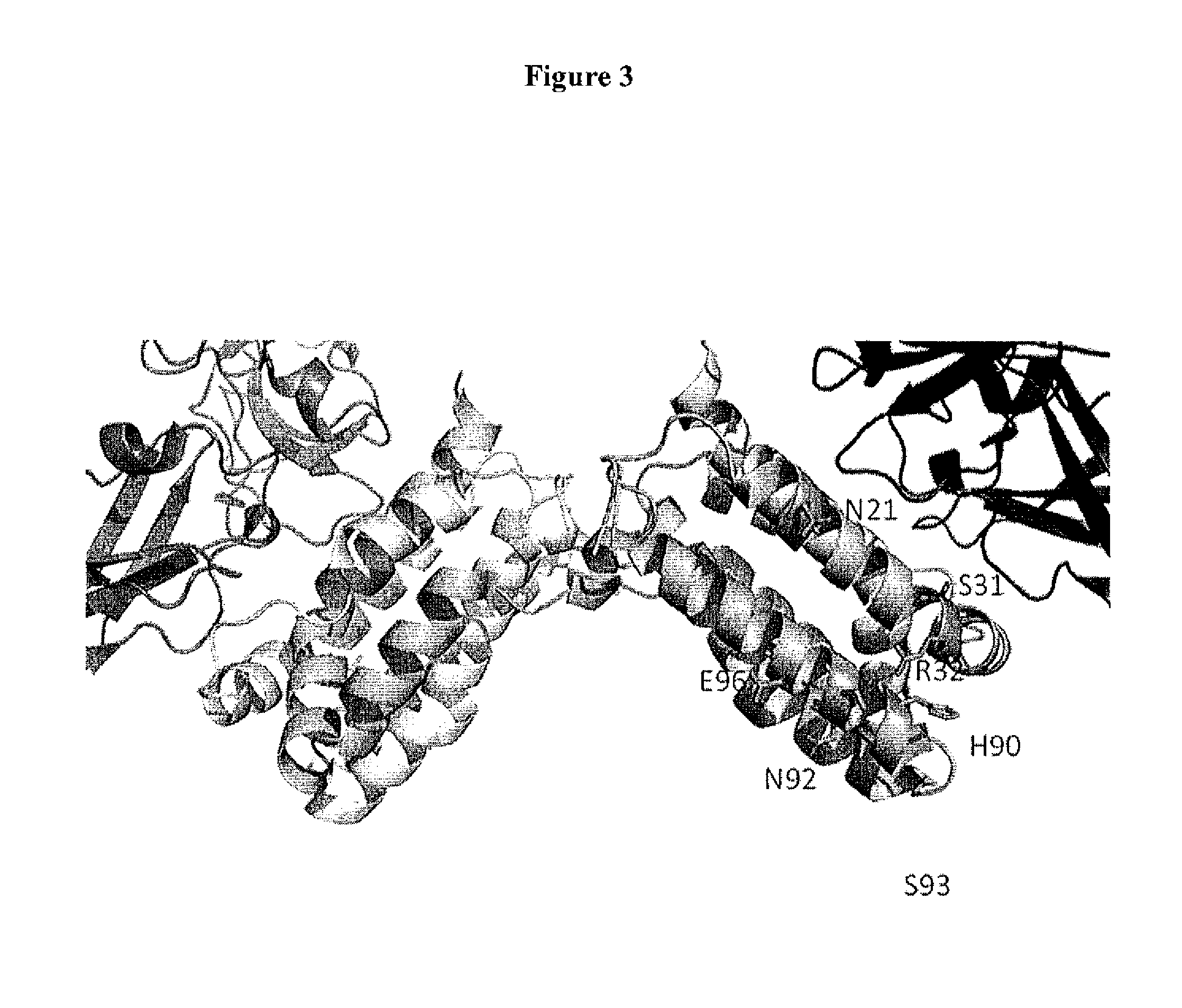Interleukin-10 Polypeptide Conjugates and Their Uses
a technology of interleukin-10 and conjugates, which is applied in the field of interleukin-10 (il10) polypeptide conjugates, can solve the problems of increasing the risk of a reduction or even total loss in bioactivity of the parent molecule, the inability to fully minimize the therapeutic effect, and the use of peg derivatives, so as to increase tumor killing activity, and prolong the serum half-life
- Summary
- Abstract
- Description
- Claims
- Application Information
AI Technical Summary
Benefits of technology
Problems solved by technology
Method used
Image
Examples
example 2
IL-10 Purification, PEGylation, and IL-10 dimer-PEG Purification Process Cytoplasmic Preparation from E. coli
1. Cell Lysis & Oxidation of IL-10
[0648]An 850 gram bacterial cell pellet is resuspended in 2550 ml (3 volumes) of 20 mM TRIS, pH 8.5 lysis buffer to obtain a mixture that is 25% solid. Approximately four liters of culture in fermentation broth will yield this 850 gram bacterial pellet. The mixture is stirred at room temperature for 30-60 minutes, and the suspension is passed through the Microfluidizer processor twice with cooling at 15,000 psi. The lysate is centrifuged at 13,500×g for 45 minutes in a JA10 rotor at 4° C., and the supernatant is collected. Freshly prepared 0.1 M GSSG (FW 612.6) can be added to obtain a molar ratio of GSSG to IL-10, approximately 16. The combination is stirred to mix well, and the pH is adjusted to 7.2-7.4 with 1 M NaOH. After the mixture is stirred overnight at 4° C., it can be diluted until its conductivity reaches 1.6-1.9 mS / cm with water,...
example 3
[0678]This example details cloning and expression of an IL-10 including a non-naturally encoded amino acid in E. coli. This example also describes methods to assess the biological activity of modified IL-10.
[0679]Methods for cloning IL-10 are known to those of ordinary skill in the art. Polypeptide and polynucleotide sequences for IL-10 and cloning of these polypeptides into host cells as well as purification of IL-10 are known in the art and are also detailed in Goeddel et al., Nucleic Acids Res. 8, 4057 (1980) which is incorporated by reference in their entirety herein.
[0680]The amino acids encoding IL-10 without a leader or signal sequence is shown as SEQ ID NO: 3. An introduced translation system that comprises an orthogonal tRNA (O-tRNA) and an orthogonal aminoacyl tRNA synthetase (O—RS) is used to express IL-10 containing a non-naturally encoded amino acid. The O—RS preferentially aminoacylates the O-tRNA with a non-naturally encoded amino acid. In turn the translation system ...
example 4
[0692]This example details introduction of a carbonyl-containing amino acid and subsequent reaction with an aminooxy-containing PEG.
[0693]This Example demonstrates a method for the generation of an IL-10 that incorporates a ketone-containing non-naturally encoded amino acid that is subsequently reacted with an aminooxy-containing PEG of approximately 5,000 MW. Each of the residues before position 1 (i.e. at the N-terminus), 1, 2, 3, 4, 5, 6, 7, 8, 9, 10, 11, 12, 13, 14, 15, 16, 17, 18, 19, 20, 21, 22, 23, 24, 25, 26, 27, 28, 29, 30, 31, 32, 33, 34, 35, 36, 37, 38, 39, 40, 41, 42, 43, 44, 45, 46, 47, 48, 49, 50, 51, 52, 53, 54, 55, 56, 57, 58, 59, 60, 61, 62, 63, 64, 65, 66, 67, 68, 69, 70, 71, 72, 73, 74, 75, 76, 77, 78, 79, 80, 81, 82, 83, 84, 85, 86, 87, 88, 89, 90, 91, 92, 93, 94, 95, 96, 97, 98, 99, 100, 101, 102, 103, 104, 105, 106, 107, 108, 109, 110, 111, 112, 113, 114, 115, 116, 117, 118, 119, 120, 121, 122, 123, 124, 125, 126, 127, 128, 129, 130, 131, 132, 133, 134, 135, 13...
PUM
| Property | Measurement | Unit |
|---|---|---|
| body weight | aaaaa | aaaaa |
| weight | aaaaa | aaaaa |
| weight | aaaaa | aaaaa |
Abstract
Description
Claims
Application Information
 Login to View More
Login to View More - R&D
- Intellectual Property
- Life Sciences
- Materials
- Tech Scout
- Unparalleled Data Quality
- Higher Quality Content
- 60% Fewer Hallucinations
Browse by: Latest US Patents, China's latest patents, Technical Efficacy Thesaurus, Application Domain, Technology Topic, Popular Technical Reports.
© 2025 PatSnap. All rights reserved.Legal|Privacy policy|Modern Slavery Act Transparency Statement|Sitemap|About US| Contact US: help@patsnap.com



